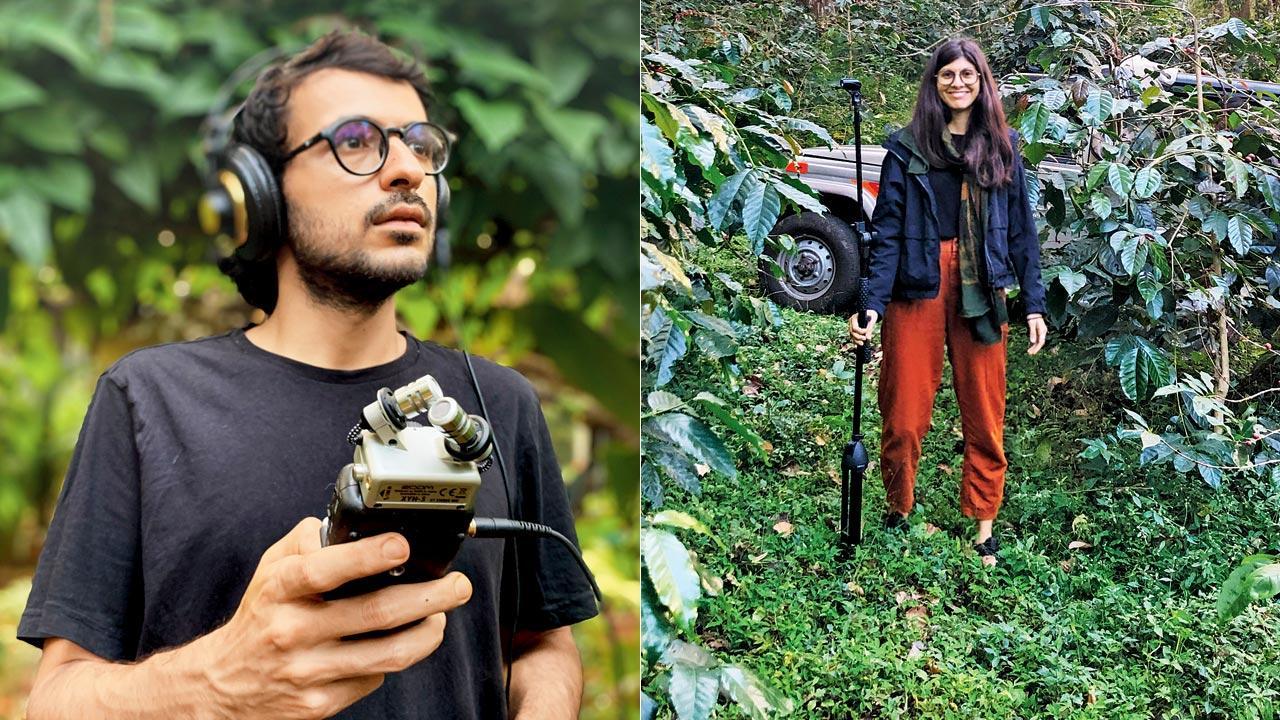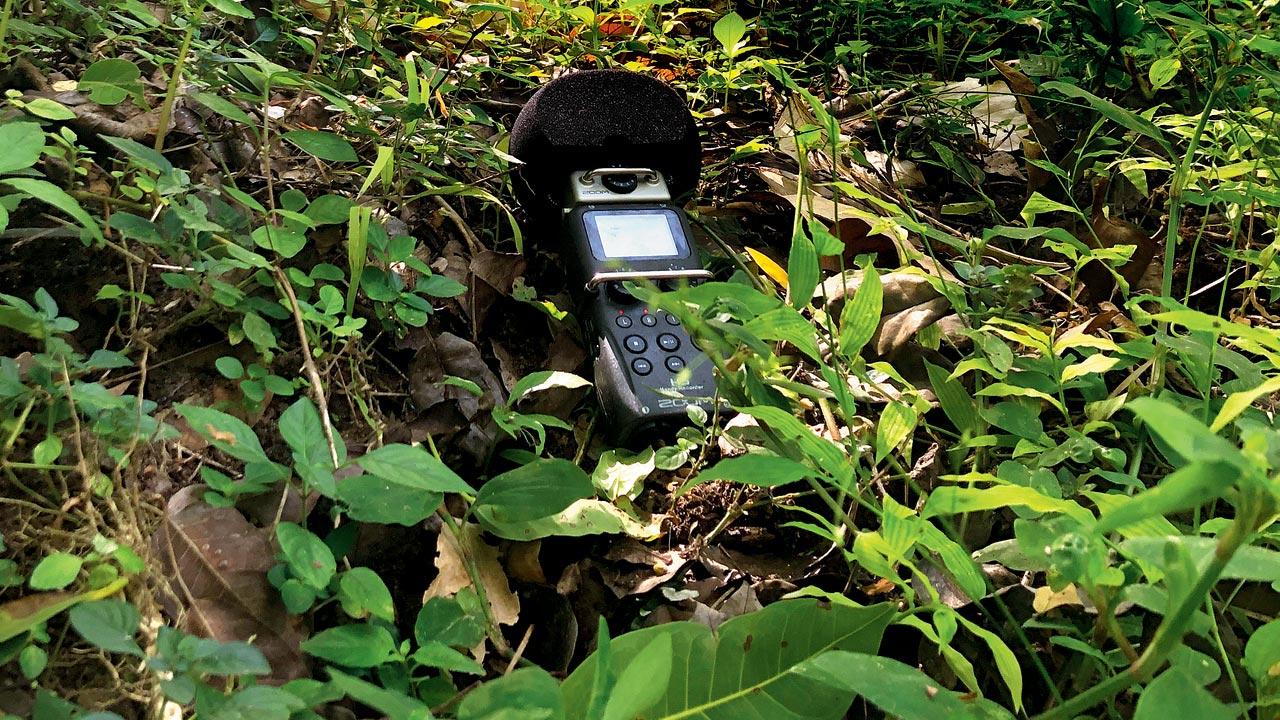Musician duo camps in deep forests to let sounds convey how life, climate and habitat have changed

Musicians Krishna Jhaveri and Sanaya Ardeshir spent around three months in the Western Ghats, collecting auditory information and speaking with people about the changing sounds in the region
It was the desire to collect sounds from the mountain range older than the Himalayas, which led to an unusual recording project. Ears to the Ground, born out of pandemic-induced restlessness, explores the sounds of the Western Ghats.
“As sound artistes, we are constantly looking for new palettes of sound to work with,” says Sanaya Ardeshir, who co-curated and co-directed this project. “I wanted to move out of the obvious choices and explore a way to integrate space and sound to create something meaningful.” Her colleague, Krishna Jhaveri, oversaw sound mixing and co-directed the project. The Mumbai-based musicians recognise themselves as music producers, sound artistes and composers.
ADVERTISEMENT
Clutching to the idea of decoding sounds, they plotted a map across Maharashtra, and then all the way to Kerala but ended up in Tamil Nadu. “The initial idea was to record the sounds of ‘wild spaces’ but that eventually expanded to include stories and conversations with people we met for whom the Western Ghats is home,” says Ardeshir.
 They hid recorders to capture the sounds of rain, wind, bees, chainsaw, animals… everything
They hid recorders to capture the sounds of rain, wind, bees, chainsaw, animals… everything
These interviews reveal their relationship to the sounds around them, and how they have changed over the years, with some disappearing altogether. “The soundscape is changing quite drastically,” says Jhaveri. “We don’t hear the sounds we used to a few years ago, and we hear new sounds that we never did before,” he adds. This was a recurring theme from several of their conversations. These include the sound of wind, water, trees; or human interaction and occupation; or vocalisation of other species. “One of the obvious ones is the changing pattern of rainfall,” says Jhaveri. Through one interview, they were able to collect data about the rainfall in the past 70 years. “The quantum of rain hasn’t changed,” says one of the speakers in theinterview, “But the pattern definitely has; it’s undeniable.” The steady, constant rainfall that lasted three months has become sporadic, with either heavy showers that cause floods or landslides; sometimes, there’s a week of sunshine and clear skies in between these calamities.
The second obvious change is the presence or absence of a particular species of wildlife. “People reported a langur’s call at high altitude, which was previously uncommon,” continues Jhaveri. “The jackal, which was quite common in the area, cannot be heard anymore. So there are some significant changes in the environment which are reflected by the changes in the soundscape.” The langur’s climb to higher regions indicates that the water in lower areas, its usual habitat, has dried up and it has climbed up in search of another source. This should worry wildlife enthusiasts.
“Some people heard chainsaws—which can indicate deforestation,” says Jhaveri. “However, conservation is also underway. Restoration is also underway. Change—both positive and negative—is taking place on multiple levels, but the human footprint is ubiquitous.” Hidden recording devices captured owls hooting, bees buzzing, frogs croaking, crickets and birds chirping, rainfall, and the sound of humans tapping fruits to check if they are ripe.
“Our mind was blown by how biodiverse and rich the soundscapes were. It’s startling for those like us who live in cities like Mumbai,” says Ardeshir. “For us activated listening is the piece sitting at the centre of the whole project, not conservation. We are not environmentalists, but we do have decades of experience in working with sound.” The 33-year-old is also the brain behind the popular electronic outfit, Sandunes. The duo calls their interactive, immersive website a “listener’s imaginarium”.
“We believe in the potential of interacting deeply with sound as a mechanism to push against a pervasive visually dominated culture It can be deeply transformational,” both say, in turns. “This is something we are both passionate about.”
Part one of the series is up on SoundCloud (ears2theground.org) as a 19-minute audio clip. In the last week of August, they also held an offline interactive and informative session at a venue in Bandra. They’ve set their eyes, or rather, ears on the Nilgiris next, and hope to employ field recordings, recording techniques, bioacoustics and indigenous listening.
 Subscribe today by clicking the link and stay updated with the latest news!" Click here!
Subscribe today by clicking the link and stay updated with the latest news!" Click here!








